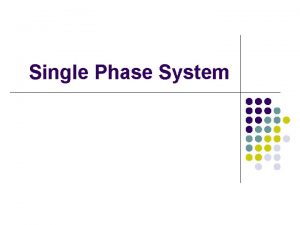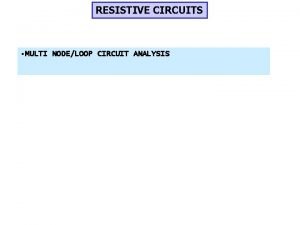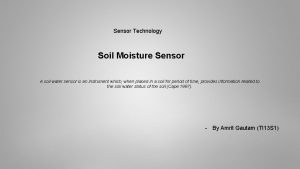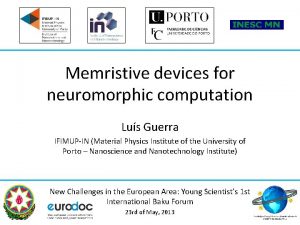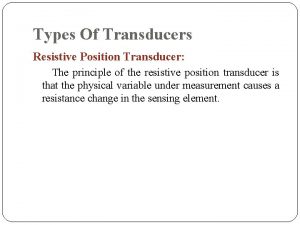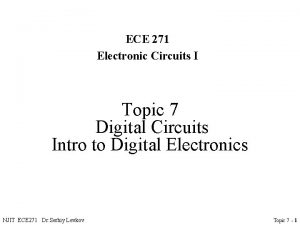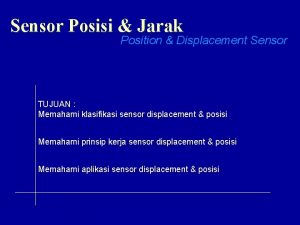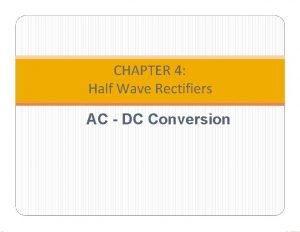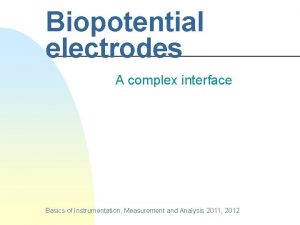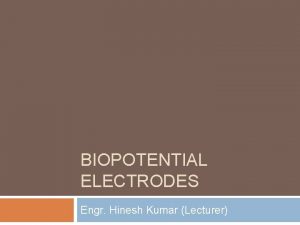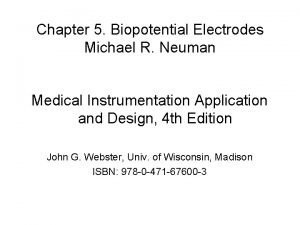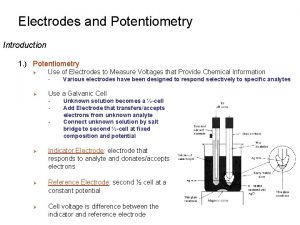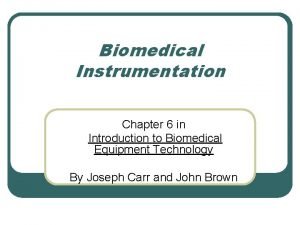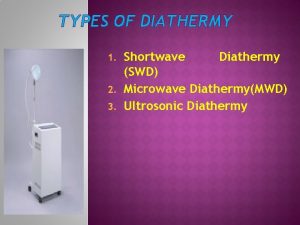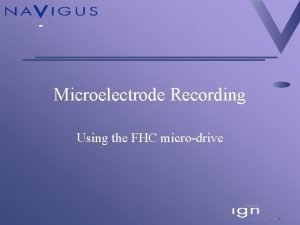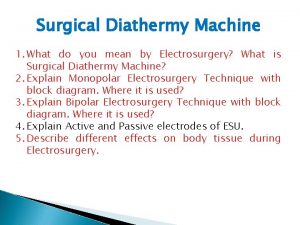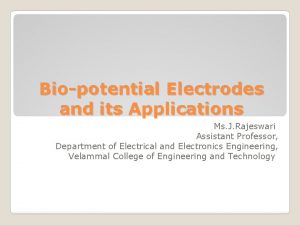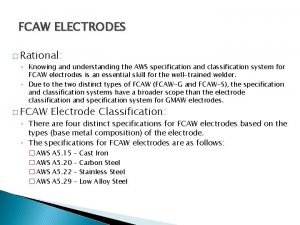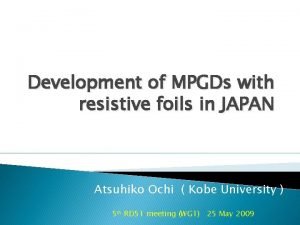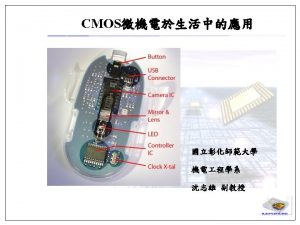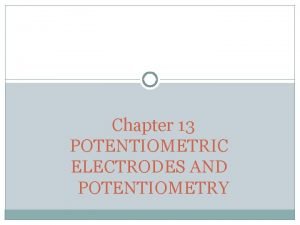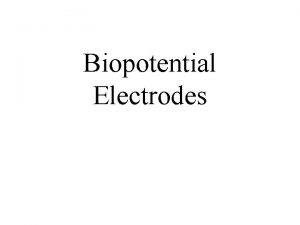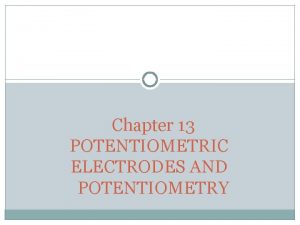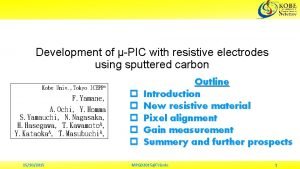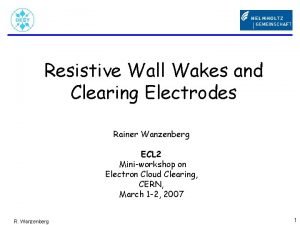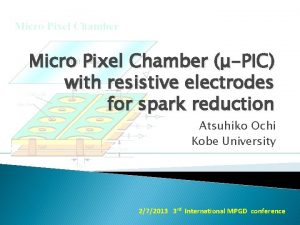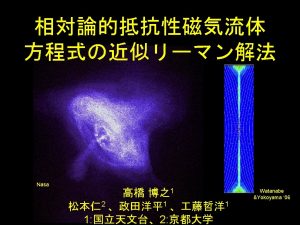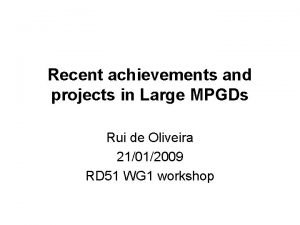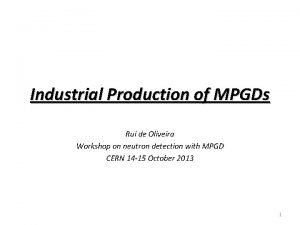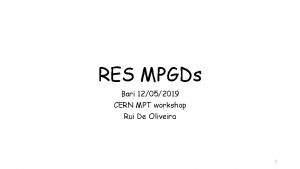Latest developments of MPGDs with resistive electrodes Developments




































- Slides: 36

Latest developments of MPGDs with resistive electrodes: Developments and tests of the of microstrip gas counters with resistive electrodes R. Oliveira, 1 V. Peskov, 1, 2 Pietropaolo, 3 P. Picchi 4 1 CERN, Geneva, Switzerland 2 UNAM, Mexico 3 INFN Padova, Italy 4 INFN Frascati, Italy

It looks like nowadays (under the pressure from facts) both the GEM and MICROMEGAS communities accept that in such application as high energy physics experiments sparks in MPGDs are possible Reasons: Raether limit achieved due to the Landay, complex spectra of particles By geometry and gas optimization the spark rate can be done very low, but in some applications, not zero D. Neuret et al , talk at Spark workshop meeting, Saclay, 25. 01. 10 S. Procurour, talk at Mini-week at CERN

Hence some efforts of our community should be focused on developing spark-protective MPGDs

First successful development was RETGEM R. Oliveira et al. , NIM A 576, 2007, 362

Large- area (10 x 20 cm 2) RETGEM with inner metallic strips

The spark protective properties of RETGEMs were confirmed by other groups See for example: R. Akimoto et al, presentation at MPGDs conference in Crete

Bulk MICROMEGAS R. Oliveira et al, ar. Xiv: 1007. 0211 and IEEE 57, 2010, 3744

Latest design of bulk. MICROMEGS with resistive mesh

There also other efforts from various group to develop sparkprotective MICROMEGAS

Spark protection • Always needed for gaseous detectors – Spark induced by dense ionisation cluster from the tail of the Landau – Unprotected pixel chip rapidly killed by discharges • Wa. Prot: 7µm thick layer of Si 3 N 4 on anode pads of pixel chip – Normal operation: avalanche charge capacitively coupled to input pad – At spark: discharge rapidly arrested because of rising voltage drop across the Wa. Prot layer Wa. Prot – Conductivity of Wa. Prot tuned by Si doping – For s. LHC BL we should not exceed 1. 6*109 Ωcm (10 V voltage drop) – Has proven to give excellent protection against discharges F. Hartjes, Report at the MPGD Conf in Crete 5 layers of 1. 4 µm Si 3 N 4

Very impressive developments are under way by ATLAS group T. Alexopoulos et al. , , RD 51 Internal report #2010– 006

In this report we will describe further developments in this direction: Microstrip gas counters with resistive electrodes-R-MSGCs were the first micropattern gaseous detectors* They are still attractive for some applications *A. Oed, NIM A 263, 1988, 351

One of the major problem wich standard MSGC had was their “fragility”: they can be easily destroyed by sparks appearing at gains higher than 103 -104 (depending on detector quality) A photograph of MSGC damaged by discharges (courtesy of L. Ropelewski)

We have developed two designs of R-MSGC: 1) With resistive anode and cathode strips 2) With metallic anode and resistive anode strips

R-MSGC #1 Fiber glass plates (FR-4) Cu strips 50 μm wide were created on the top of the fiber glass plate by the photolithographic method Then in contact with the side surfaces of each Cu strip dielectric layers (Pyralux PC 1025 Photoimageable coverlay by Du. Pont) were manufactured; Finally the detector surface was coated with resistive paste and polished so that the anode and the cathode resistive strips become separated by the Coverlay dielectric layer.

R-MSGC #2 As a next step the middle part of the Cu strips were coated with 50 μm width layer of photoresist (Fig. d) and the rest of the area of the Cu strip were etched (Fig e); in such a way metallic anode strips 50 μm in width were created. Finally the gaps between Cu anode strip and the cathode resistive strips were filled with glue FR-4 and after it hardening the entire surface was mechanically polished. First by photolithographic technology Cu strip 200 μm in width were created on the top of the FR-4 plate (Figs a and b). Then the gaps between the strips were filled with the resistive paste (Fig. c).

The main line which Rui pursue: to use for manufacturing R-MSGCs the same materials as for TGEMs or MICROMEGAS and similar technology to make detectors cheap and affordable

For the sake of simplicity no special care was done about edges of the strips However these parts was “enforced” by resistivity MSGC edges

Photo of R-MSGC Cu anode strip (50μm width, 400 μm pitch) and resistive cathode strips ( 200 μm width ).

Cu strips Ends parts of anode strips Resistive strips

Photo of edges of resist strips

Experimental setup Removable preamplification structure

Results obtained with R-MSGC #1

Surface streamer-old works V. Peskov et al. , NIM A 397, 1997, 243

After additional surface cleaning

“PPAC” mode* *F. Angelini et al. , NIM A 292, 1990, 199

Lessons we learned for tests of prototype #1 1) The maximum achievable gains are low, but sparks were mild and never destroy the detector 2)Gain limitation came from the surface streamers 3) The appearance of the surface streamers can be diminished in detectors with better surface quality and narrow anode width

Results obtained with R-MSGC#2 in Ne (Thinner anode strips, better surface quality than in R-MSGC#1)

Results obtained with R-MSGC#2 in Ne+5%CH 4

Rate characteristics Ne Ne+5%CH 4

Possible applications

Noble liquid dark matter detectors See: E. Aprile XENON: a 1 -ton Liquid Xenon Experiment for Dark Matter http: //xenon. astro. columbia. edu/presentations. html And A. Aprile et al. , NIM A 338, 1994, 328, NIM A 343, 1994, 129

R-TCOBRA* R-COBRA with resistive electrodes Charge Event LXe hv hv Cs. I photocathode *See F. D. Amaro et al. , JINST 5 P 10002 Shielding TGEMs with HV gating capability

Conclusions ●Preliminary tests described above demonstrate a feasibility of building spark protective MSGCs. In these detectors due the resistivity of electrodes and small capacity between the strips the spark energy was strongly reduced so the strips were not damaged even after a few hundreds sparks. ● The maximum gains achieved in the present designs are lower than one obtained with good quality “classical” MSGC , however more design are in course ● We are planning to apply this technology for manufacturing a CONBRA-type detectors with resistive electrodes The spark-protected COBRA will be an attractive option for the detection of charge and light from the LXe TPC with a Cs. I photocathode immerses inside the liquid. ● Another option for the LXe TPC, which is currently under the study in our group, is to use LXe doped with low ionization potential substances. In this detector the feedback will be also a problem and thus COBRA with resistive electrode will be also an attractive option.


 Manual and mechanical resistance exercise
Manual and mechanical resistance exercise Pulsus tardus
Pulsus tardus Phasor diagram of pure resistive circuit
Phasor diagram of pure resistive circuit Inverter loading ratio
Inverter loading ratio Resistive circuit analysis
Resistive circuit analysis Resistive soil moisture sensor working principle
Resistive soil moisture sensor working principle Resistive switching
Resistive switching Resistive displacement transducer
Resistive displacement transducer Ece 271
Ece 271 Resistive displacement sensor
Resistive displacement sensor Impedance complex number
Impedance complex number Half wave uncontrolled rectifier with r load
Half wave uncontrolled rectifier with r load Biopotential electrodes
Biopotential electrodes Fast fill electrodes
Fast fill electrodes Hypodentie
Hypodentie Faradaic vs non-faradaic
Faradaic vs non-faradaic Calcul fréquence cardiaque ecg rythme irrégulier
Calcul fréquence cardiaque ecg rythme irrégulier Biopotential electrodes lecture notes
Biopotential electrodes lecture notes Potentiometry introduction
Potentiometry introduction Recording problems in biomedical instrumentation
Recording problems in biomedical instrumentation Types of diathermy
Types of diathermy Gravitational settling chamber
Gravitational settling chamber Microelectrode techniques
Microelectrode techniques Floating electrodes for ecg
Floating electrodes for ecg Type of defibrillator
Type of defibrillator Concentrated sulfuric acid electrolysis
Concentrated sulfuric acid electrolysis Aps therapy electrodes
Aps therapy electrodes Fulguration
Fulguration Hamilton sus
Hamilton sus Transport no. in electrochemistry
Transport no. in electrochemistry Welsh cup electrodes have
Welsh cup electrodes have The two aws classifications for fcaw electrodes are
The two aws classifications for fcaw electrodes are Chapter 6 shielded metal arc welding
Chapter 6 shielded metal arc welding Latest trands
Latest trands Sbm assessment tool 2021 excel
Sbm assessment tool 2021 excel How to show toolbar in word 2016
How to show toolbar in word 2016 Andrew heywood global politics latest edition
Andrew heywood global politics latest edition


